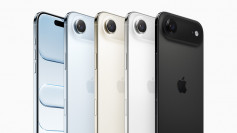Samsung seems to be under the impression that the smartwatch market still has promise. After reaping dividends from the Samsung Gear S3, the Korean Tech Giant tries to follow it up with another smart wearable in the Samsung Galaxy Watch.
The Samsung Galaxy Watch was launched alongside the Galaxy Note 3 recently and is still powered by the company’s own Tizen OS. This is the same operating system that the Gear S2 and S3 carried, also a sign that the wearable OS will not be ditched anytime soon.
So what changes does the Samsung Galaxy Watch bring? Smart wearables have received their share of criticism, particularly on how they function. While Samsung has tried its best to design it close to actual watches worn by everyday consumers, it could all be in the sound it sends out.
For their latest offering, the Samsung Galaxy Watch will actually tick every second like a normal analog watch, hopefully, something that would make it feel like a non-smartwatch, Android Authority said. It is a minor change, something that may or may not gain the interest of tech-savvy buyers.
The Samsung Galaxy Watch will be available in two sizes – the 42 mm and 46 mm models. While both sport practically the same design, the difference lies in the battery that will come with it The larger model, the 46 mm, will come with a 472 mAh battery that can reportedly last for 6 days. The smaller version, on the other hand, will have a smaller 270 mAh battery that will be good for up to 4 days., 9to5 Google said.
Aside from the difference in size, the Samsung Galaxy Watch will also differ in terms of connectivity options. The base model will have Bluetooth and WiFi connectivity while the higher one offers the same plus LTE capabilities. Aside from these differences, everything else under the hood of the Samsung Smart Galaxy Watch is practically the same.
The Samsung Galaxy Watch will rely on a dual-core 1.15 GHz processor, 1.5 GB of RAM, 4 GB of internal storage and run on Tizen OS 4.0. Like most wearables, the Samsung Galaxy Watch will still come in handy for fitness buffs.
This means the smartwatch can still be used to record heart rate data through the aid of the wearable’s photodiode sensors. The device supports over 39 different types of workouts and also includes a built-in stress checker similar to other wearable devices.
The base model (42 mm) will be available in black and rose gold color themes and retail for $329.99. The larger 46 mm model, on the other hand, will come in silver color and cost $349.99.




